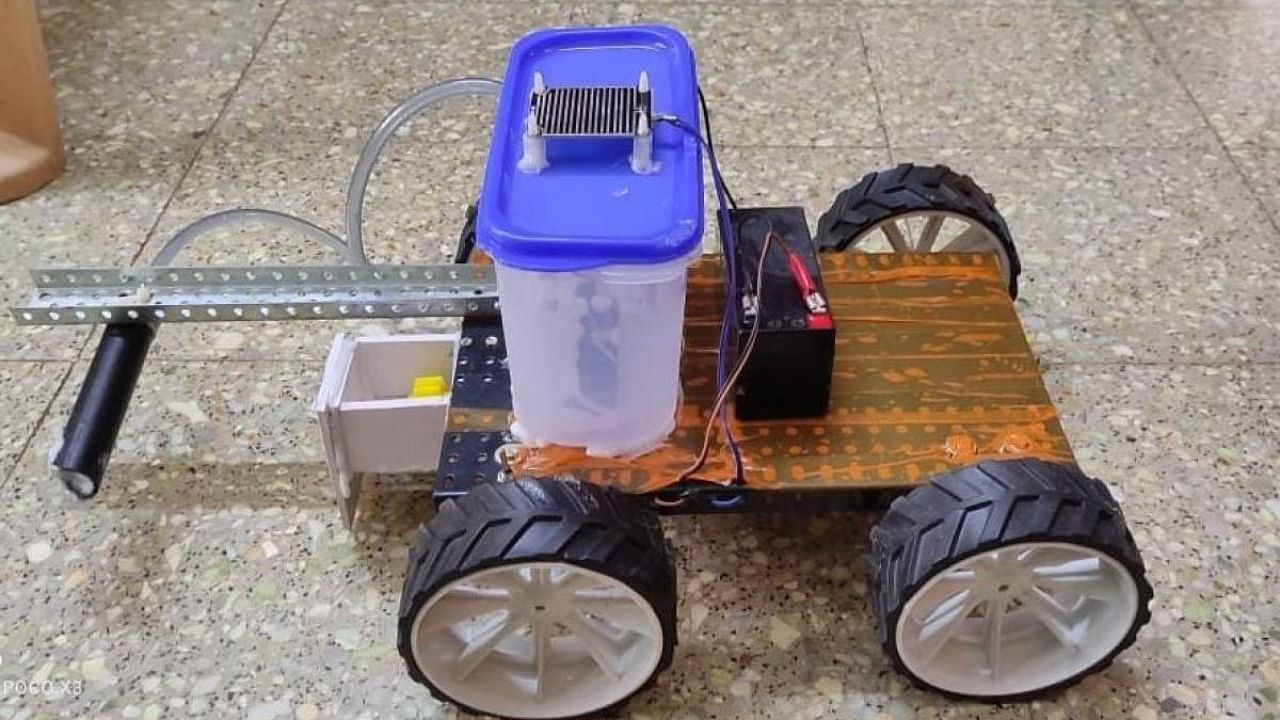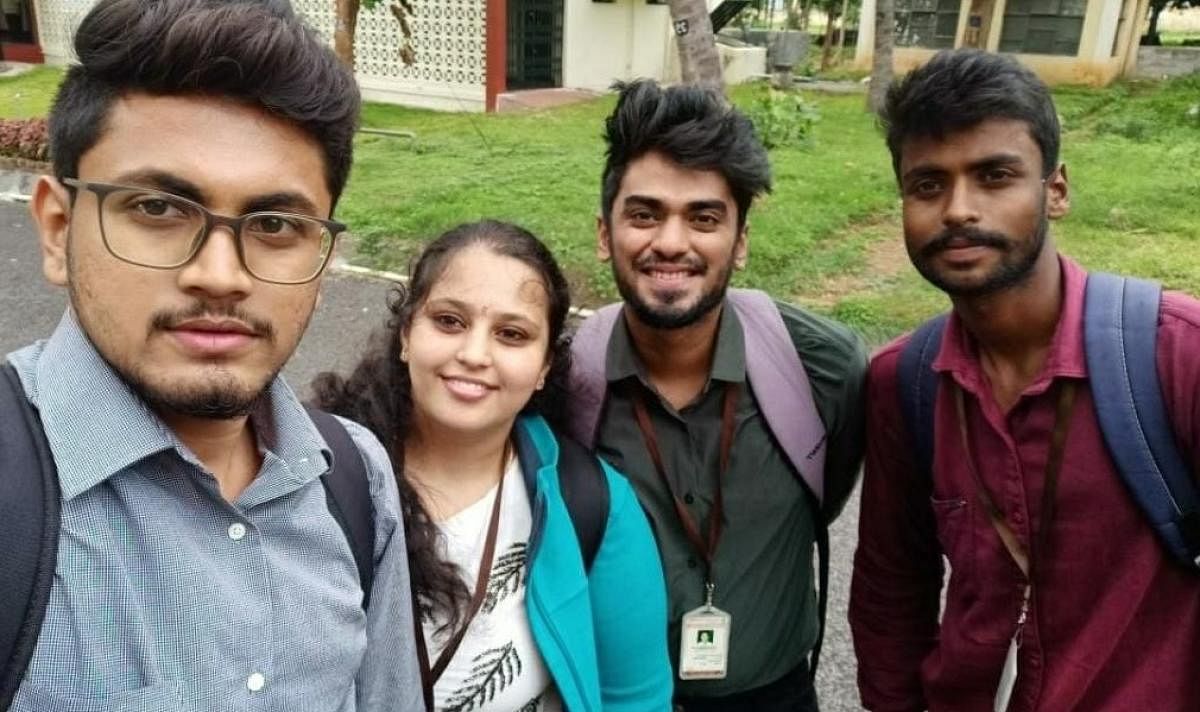

Four students of Industrial and Production Engineering of PES College of Engineering in Mandya have designed a low-cost robot, agri robot for sowing seeds and to sprinkle fertiliser and water.
The project was carried out by K A Krupa, D R Chidambar, K P Gowtham Gowda and H C Pramod under the guidance of professor B S Shivakumara.
While a seed-cum-fertiliser drill sowing machine costs around Rs 60,000, a sprinkler for fertiliser and water costs up to Rs 17,000 at present. The agri robot which is a combo of both costs around Rs 35,000.
Shivakumara said, "The metal body weighs about 900 gram with an ESP 32 micro controller. The robot is also fitted with DHT 2 and ultrasonic sensors which can sense humidity and temperature. It can also sense an obstacle up to 40 cm. The 12 watts battery can power the machine for up to 3 hours. It has rain sensors which turn off the machine when it rains."
"Agriculture and horticulture have so much scope. This field requires advanced technologies for sowing, cropping, cutting and irrigation," he said.
The machine may be controlled on smartphones using an app developed by the same team. The robot may be connected via wi-fi or bluetooth within a range of 500 metres. The seed sowing, digging and irrigation robot can manoeuvre on varied terrain and does not damage the field.
“Getting farm labourers is a major problem in agriculture these days. The agri robot reduces the expenses and increases an ideal opportunity for seed sowing and irrigation operations,” said Krupa.
She added, “15 workers can sow paddy on 2.5 acres of land on a day. Our prototype agri robot can cover one acre a day with the current speed. If the speed is increased, it can cover up to 1.25 to 1.5 acres per day. If we develop this into a real time product, its minimum capacity could be 3 to 4 acres per day.”
Further improvement is required for the robot. The students have plans to include solar panels to reduce the use of batteries. The proposed robot can be manufactured in a variety of sizes and capacities to match the size and structure of the agricultural field. The whole system can be controlled by installing software on a normal mobile phone. This project can help conserve water and minimise wastage of fertilisers, seeds, effort and time.